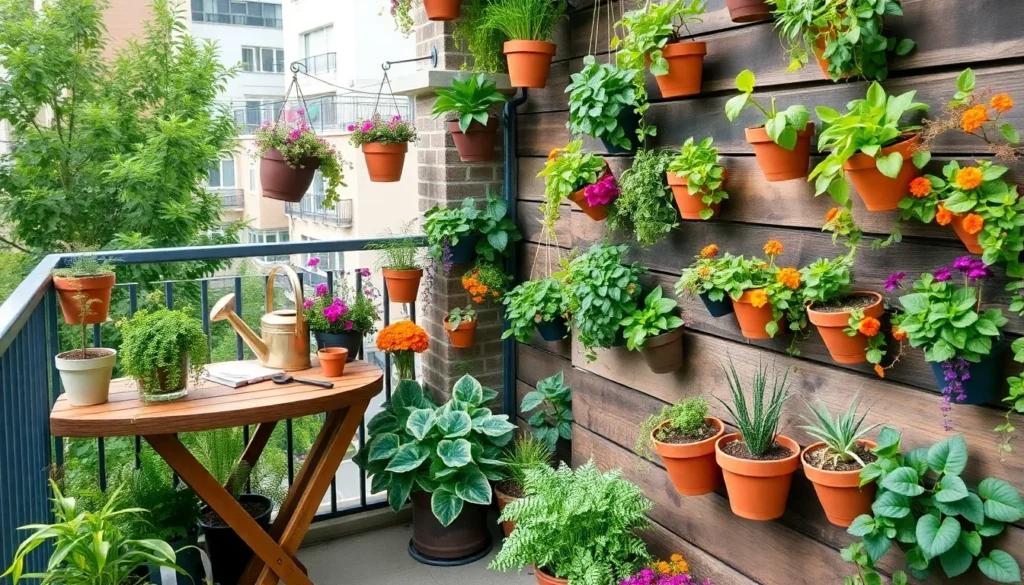Welcome to the vibrant world of urban gardening, where small spaces burst with life and creativity flourishes in every nook and cranny. Whether you’re a seasoned gardener who can coax a bloom from a concrete slab or a beginner just dipping your toes into the lush pool of plant care, these “7 Quick Urban Gardening Tips” are your ticket to transforming any space into a verdant oasis.
In the hustle and bustle of city life, finding tranquility amidst the chaos can be as simple as nurturing a green corner of your own. This guide is packed with practical, easy-to-follow advice that promises to maximize your gardening efforts, turning even the tiniest balcony into a thriving garden. By embracing these tips, you’ll not only beautify your surroundings but also bask in the joy and satisfaction that comes from watching your plants flourish and grow. Get ready to dig in and discover the profound rewards of urban gardening, confident that success is within your reach.
Choose Compact Container Varieties
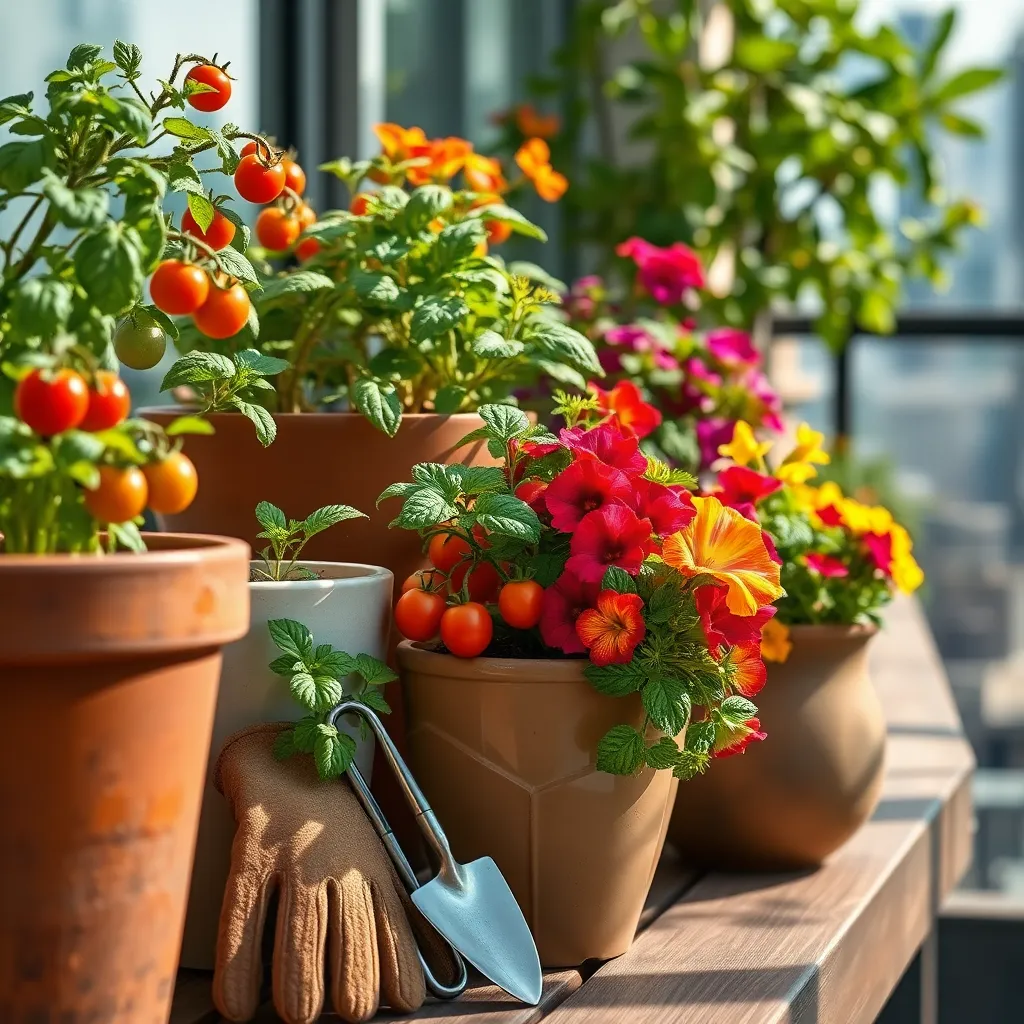
Urban gardening often means limited space, so choosing compact container varieties is essential. These varieties are specifically bred to thrive in smaller environments, making them ideal for balconies, patios, or small yards.
Look for plants labeled as “dwarf” or “bush” varieties, as these are typically well-suited for containers. Some popular choices include cherry tomatoes, dwarf beans, and bush cucumbers, which can all flourish with the right care.
When planting in containers, ensure they have adequate drainage to prevent root rot. Use high-quality potting mix that retains moisture but also allows for good aeration, and consider adding some perlite or vermiculite to enhance drainage.
Watering is crucial for container plants since they dry out faster than those in the ground. Check the soil daily and water when the top inch feels dry, but avoid letting the container sit in water to prevent soggy roots.
Maximize Space with Vertical Planters
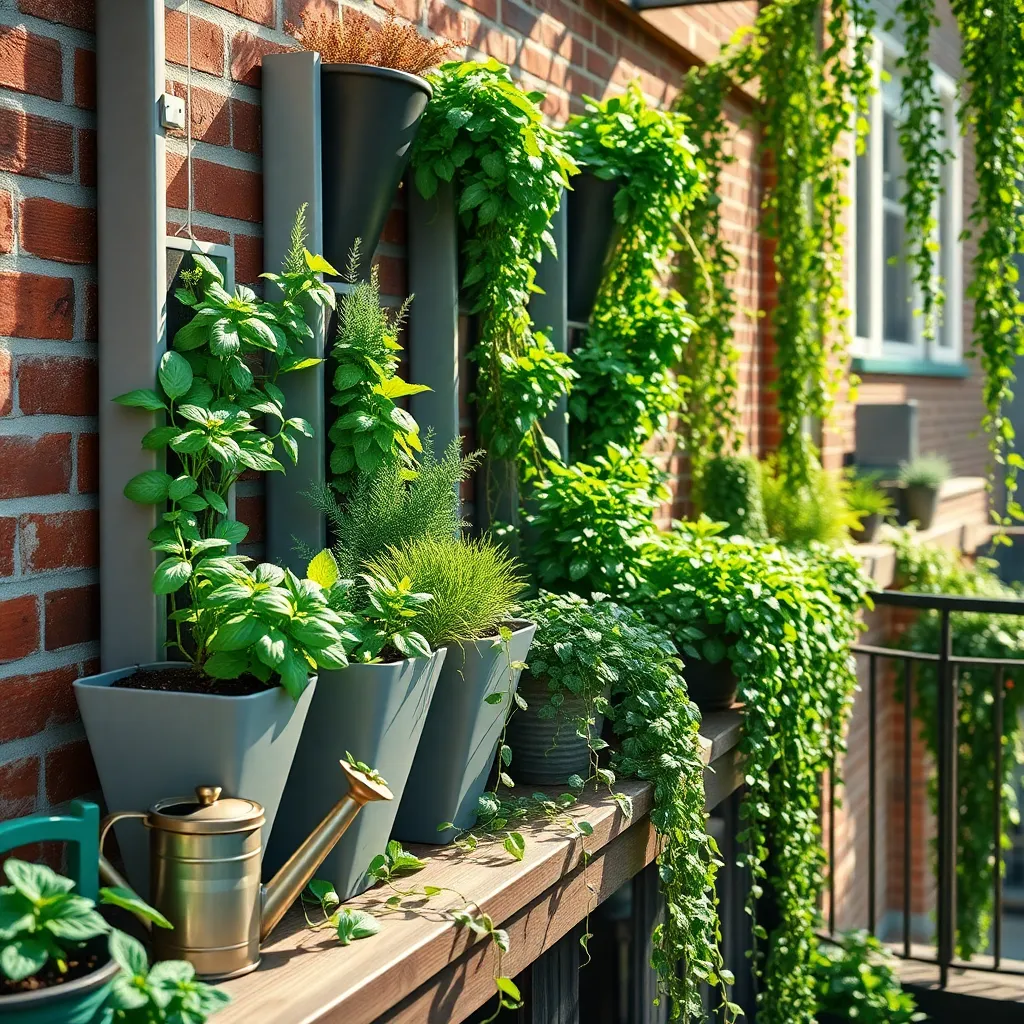
Vertical planters are an innovative way to maximize space in small urban gardens. By growing plants vertically, you can create lush, green walls that add beauty and functionality to your space.
Start by choosing the right structure for your vertical garden, such as a trellis, wall-mounted pockets, or tiered planters. Select plants that thrive in vertical settings, like vining vegetables, herbs, and compact flowers.
Ensure your vertical planters have adequate drainage to prevent waterlogging, which can harm plant roots. Use a high-quality potting mix that retains moisture but drains well, such as a mix of peat moss, perlite, and compost.
For optimal growth, position your vertical planters to receive the appropriate amount of sunlight based on the plants’ needs. Regularly rotate your plants if sunlight is uneven to promote even growth and prevent leggy stems.
Water your vertical garden consistently, as plants in vertical planters may dry out more quickly than in-ground gardens. Consider installing a drip irrigation system to ensure even and efficient watering, especially in hot or dry climates.
Utilize Windowsills for Herb Gardens
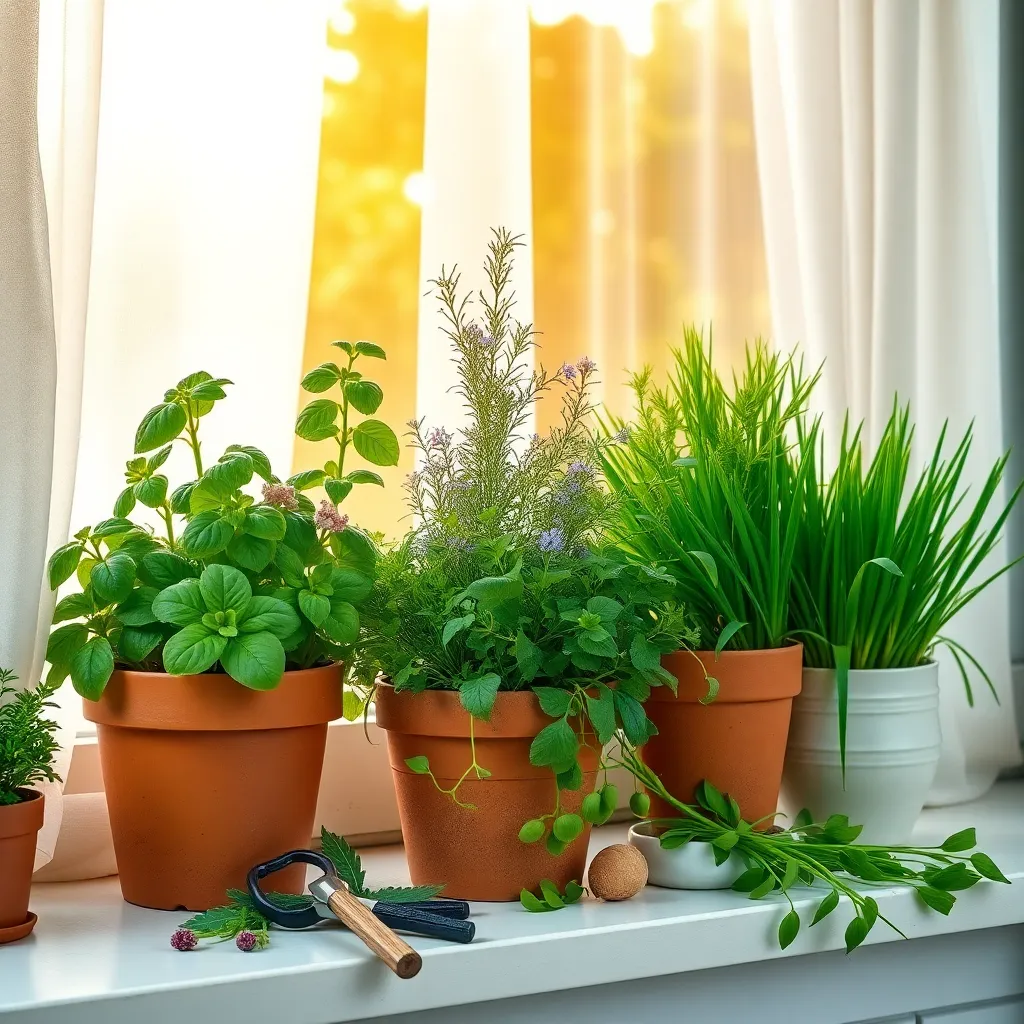
Transform your windowsills into thriving herb gardens by choosing the right plants and conditions. Opt for herbs like basil, mint, and parsley, which thrive in indoor environments and require minimal space.
Position your herbs on a windowsill that receives at least six hours of sunlight per day to ensure healthy growth. If natural light is limited, consider using a small LED grow light to supplement the lighting needs.
Use a well-draining potting mix to prevent waterlogging, which can harm the roots. Incorporate perlite or vermiculite into the soil mix to enhance aeration and drainage, crucial for healthy herb growth.
Water your herbs sparingly, allowing the top inch of soil to dry out between waterings to avoid root rot. For best results, water in the morning to give your plants time to absorb moisture before nighttime temperatures drop.
Install Drip Irrigation Systems

Drip irrigation systems are an efficient way to water your urban garden, ensuring each plant receives the exact amount of moisture it needs. Installing a drip system can help reduce water wastage and is especially beneficial for containers and raised beds.
To get started, assess the layout of your garden and determine where your plants are located. Plan the placement of your drip lines so that they reach the base of each plant, allowing water to deliver directly to the roots.
Purchase a drip irrigation kit that suits your garden size, which typically includes hoses, emitters, and connectors. Choose a system with adjustable emitters to customize the water flow based on specific plant needs—some plants require more water than others.
Connect your drip irrigation system to a timer to automate the watering process, ensuring consistent moisture levels. Set the timer according to the season; during hot months, your plants may need watering more frequently, while in cooler months, less frequent watering is sufficient.
Create a Compost Bin for Fertilizer

Creating a compost bin is an excellent way to recycle kitchen scraps and garden waste into nutrient-rich fertilizer. Start by selecting a suitable location in your garden that’s out of the way but easily accessible for regular use.
Use materials like untreated wood pallets, wire mesh, or even a simple plastic bin to construct your compost container. Ensure the bin has good ventilation, as air circulation is crucial for the composting process.
Begin by layering green materials, such as fruit and vegetable scraps, with brown materials like dried leaves and twigs. This balance of green and brown materials helps maintain the right carbon-to-nitrogen ratio, which is essential for effective composting.
Turn the compost regularly to aerate it, which speeds up decomposition and prevents any unpleasant odors. Depending on the climate and materials used, your compost can be ready to use in as little as a few months.
For those with limited space, consider a small kitchen compost bin with charcoal filters to reduce odors. This can later be transferred to your outdoor compost bin, ensuring a continuous cycle of nutrient recycling.
Rotate Crops to Boost Yield
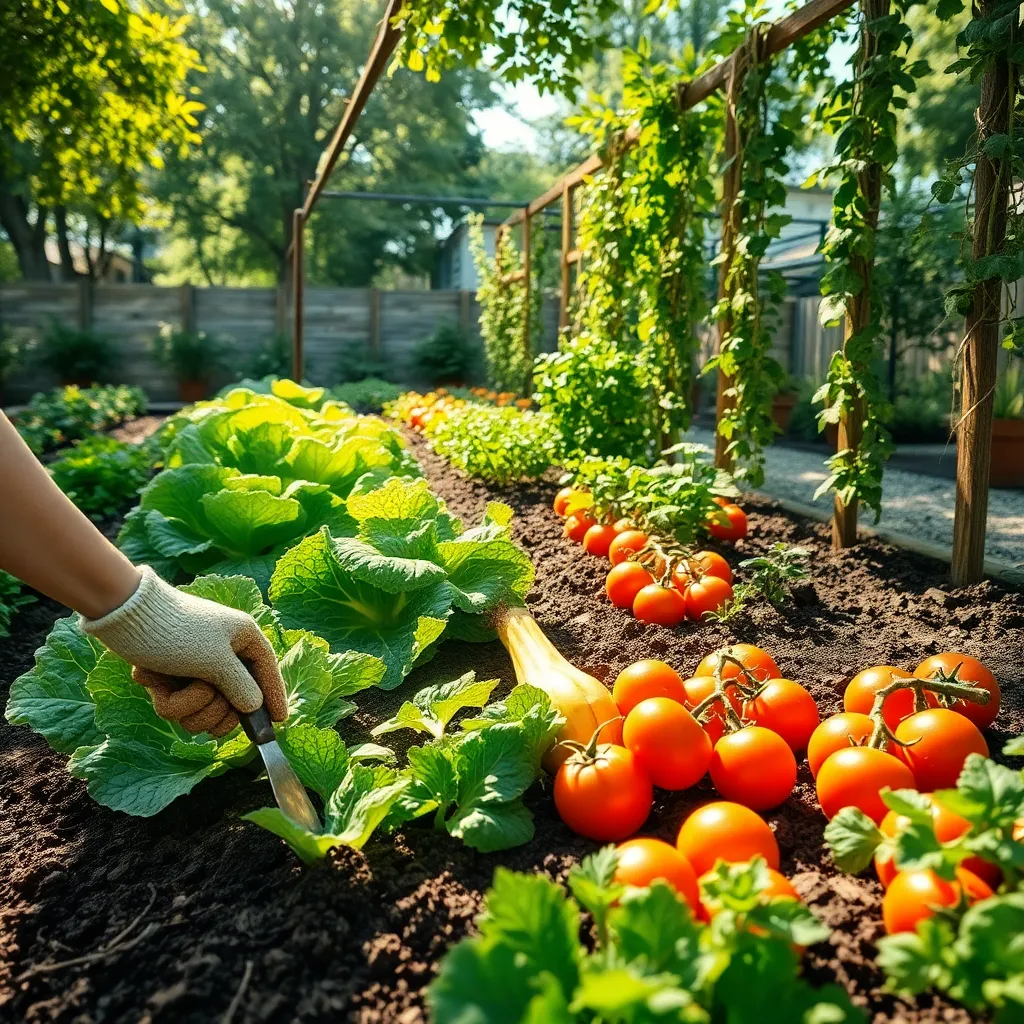
Rotating crops is a time-tested strategy to improve soil health and boost your garden’s yield. By changing the location of your plants each season, you can prevent soil depletion and reduce pest buildup.
Begin by planning your garden layout to ensure that the same family of plants doesn’t occupy the same spot year after year. For example, if you planted tomatoes in one area, consider planting legumes there next season to enhance nitrogen levels in the soil.
It’s essential to understand the plant families to effectively rotate crops. Common families include the nightshades (tomatoes, peppers), legumes (peas, beans), and brassicas (cabbage, broccoli).
Advanced gardeners might try a four-year crop rotation plan, where each area of the garden is dedicated to different plant families each year. This method not only improves soil fertility but also minimizes disease risk, ensuring healthier plants.
Use Reflective Surfaces for More Light
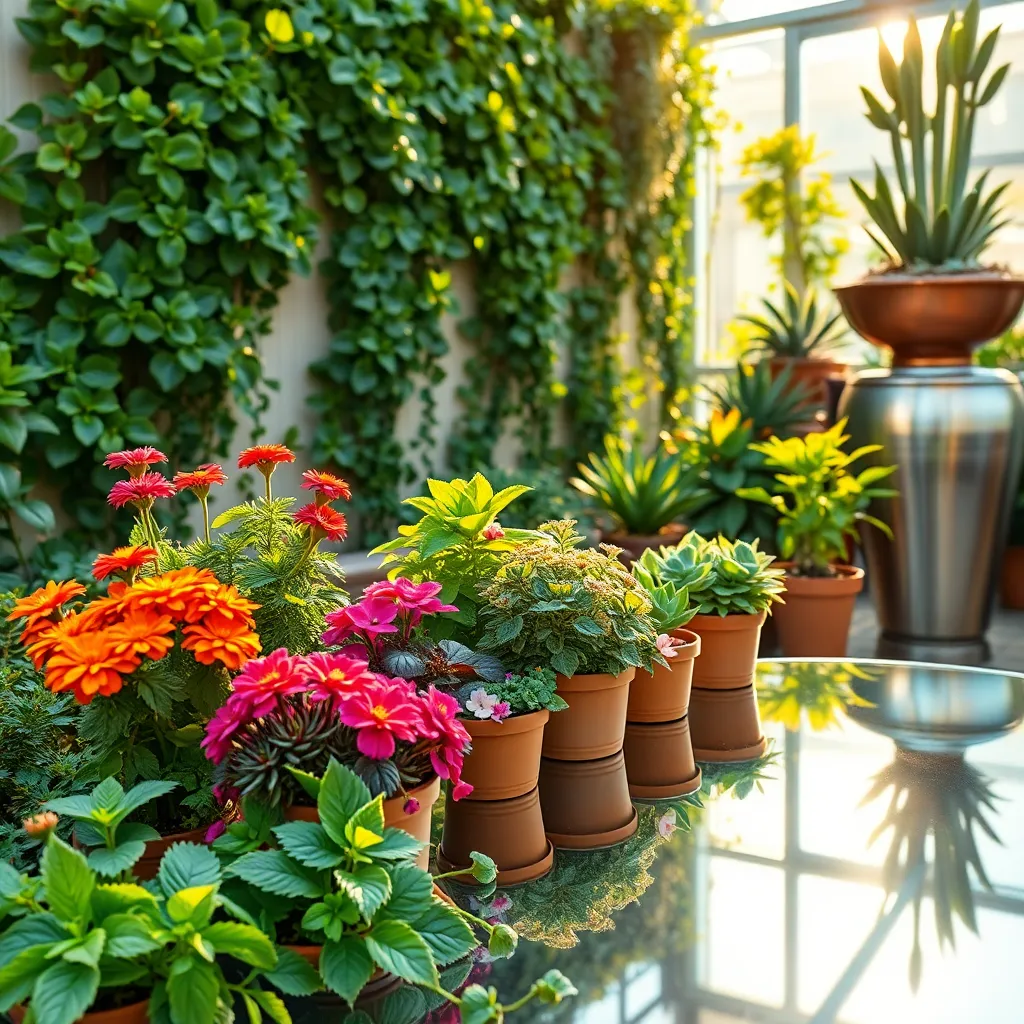
Enhancing light availability is crucial for urban gardens, especially when space is limited. Reflective surfaces can be a game-changer by directing more sunlight to your plants, which is essential for photosynthesis.
To maximize light exposure, consider placing mirrors or aluminum foil behind potted plants. These reflective materials not only bounce light but also can help ward off pests by confusing them.
Positioning is key to effectively using reflective surfaces in your garden. Ensure that mirrors are angled to capture and redirect the most sunlight during the day, particularly for plants that thrive in full sun conditions.
For those seeking an advanced tactic, use white-painted surfaces to create a subtle, uniform reflection. This method is less intense than mirrors and can be beneficial for delicate plants that require a more diffused light environment.
Conclusion: Growing Success with These Plants
In exploring the lush world of urban gardening, we’ve unearthed seven vital relationship concepts that nurture both plants and human connections. First, we delved into the importance of patience, reminding us that growth takes time. Secondly, we highlighted the value of communication, just as plants need the right conditions to thrive. Third, adaptability shines through, as weathering life’s unpredictable storms strengthens us. Fourth, we emphasized the need for space, allowing relationships room to breathe and flourish. Fifth, consistent care emerged as a cornerstone, nurturing bonds with regular attention. Sixth, the power of shared goals illustrated how mutual dreams can cultivate deeper connections. Lastly, we embraced resilience, recognizing that setbacks are opportunities for growth.
As your next step, choose one of these concepts and apply it to your relationships today—perhaps a heartfelt conversation or a small act of kindness. To ensure these insights remain close at hand, bookmark this article for future reference. As you continue to nurture your relationships with care and intention, remember that the seeds you plant today will blossom into lasting success. Embrace the journey, and watch your connections grow ever more vibrant.

